7 Video Game Sequels That Are Better Than Everyone Says
 |
Video game sequels tend to get more respect than movie sequels. The next Call of Duty can feature refined gameplay, enhanced graphics and new features, while there’s little to add to the next Transformers movie beyond explodier explosions. Sure, there are plenty of Duke Nukem Forevers and Turok: Evolutions out there, but games like System Shock 2, Baldur’s Gate 2 and My Little Pony Dating Simulator 2: Pinkie Pie Personals improved on already strong titles to become timeless classics.
Unfortunately, sequels that fail to reach those lofty heights of near-perfection can be unfairly written off. Many gamers claim that the following titles are mere pale imitations of the originals, but they deserve better reputations.
7. Dragon Age II
Dragon Age: Origins was a “dark fantasy” RPG, which mostly meant that every fight left your heroes looking like they’d just showered in blood. In Origins, the Mute Protagonist of Prophesised Destiny, the Mysterious Sexy Witch and a bunch of other, forgettable characters fought the Darkspawn, creatures who might as well have been called The Bad Guys for all their narrative depth. While it had solid gameplay, the atrocious story was probably lifted from the doodles in a 12 year old kid’s math book. It would have been laughable were it not so terribly, terribly boring.
Dragon Age II tried to fix that. It replaced the generic “Go Save the World” story with a more personal tale–your hero, Hawke (who actually has a voice!), arrives in the city of Kirkwall as an impoverished refugee, and over the span of a decade works his way up the social ladder while helping solve the city’s problems.
While continuing the series’ proud tradition of awkward, blunt threesomes.
Some criticisms of Dragon Age II are perfectly valid–the combat was dumbed down, and the repetitive environments are indicative of a game that was rushed to market. But everyone was so busy criticizing these flaws that they ignored the fact that the storytelling was vastly superior. Decisions have repercussions that echo through the years, and the differences between good and evil are never clear cut. Hawke often finds himself in the midst of conflicts between two sides who both have valid arguments, which is a hell of a lot more interesting than slaughtering hordes of generic enemies that exist for the sole purpose of being evil. Your actions shape the city of Kirkwall and its people, and it’s rewarding to see your hero advance in the world.
So if you don’t mind an RPG where the combat is a little on the simple side, Dragon Age II is worth your time. It may not be as polished as Origins, but you’ll actually be invested in the story instead of rolling your eyes at it every five minutes.
6. BioShock 2
Nobody really disliked BioShock 2, but the gaming world did little more than shrug its collective shoulders at it. One of BioShock’s biggest selling points was the stunning underwater city of Rapture–BioShock 2 was set in the same great location, but it wasn’t innovative the second time around. Many gamers took that as a sign the sequel would just be a retread, and decided not to depart on a second underwater adventure.
Their assumptions weren’t unreasonable, as BioShock 2 starts out feeling like little more than a carbon copy. But patience is rewarded–while BioShock limped to the finish line with an anemic closing act, its sequel gets stronger and stronger as it progresses, finishing on a high note that few shooters can match.
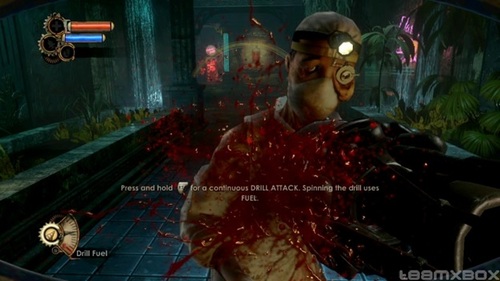 |
| Also, you got to drill people in the face. |
BioShock 2 fixed some of the original’s flaws while added compelling new elements. There are hints of BioShock Infinite in 2 as well–BioShock’s out of place final boss battle is replaced with an intense defensive struggle, and your goal is to rescue a teenage girl that you end up fighting alongside.
That girl, Eleanor, is one of the game’s strongest points–her decisions are inspired by yours, and it’s rewarding to see her do what’s right after you’ve tried to do the same (or, conversely, it’s disturbing to see her turn evil by following your bad example).
 |
| If she ends up looking like this, you done screwed up. |
Throw in a surprisingly fun multiplayer mode that everyone dismissed as pointless without trying, and you’ve got a solid package and a worthy follow-up to BioShock. It may not have the stunning originality of the first game, but you’re doing yourself a disservice if you haven’t yet experienced the story of the second go-around.
5. Age of Empires III
Age of Empires II is the best damn RTS game ever made, and don’t let anyone tell you otherwise. “But what about StarCraft?!” you protest, and to this I can simply shake my head and sigh. Yes, yes, StarCraft is fun, too. I guess.
StarCraft II sold roughly 20 quadjillion copies, despite the fact that it’s basically the same game as the original. Not despite, actually–because of. It’s StarCraft polished to a sheen, the beloved game updated for modern systems and refined to an obsessive degree. It’s no surprise it sold well.
Age of Empires III took the exact opposite approach to sequel making by radically changing the Age of Empires formula. Gamers, rarely eager to embrace change, did not take well to it.
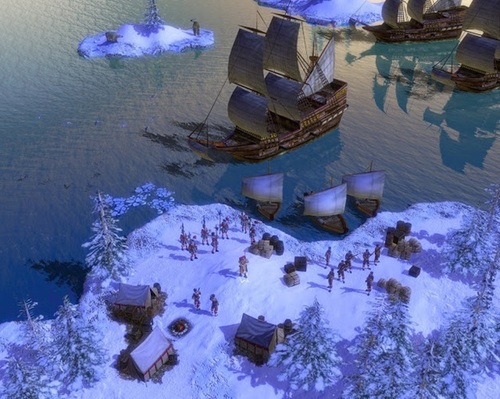 |
| The level where you had to watch your first, unprepared colonists slowly starve to death over the brutal winter was especially unpopular. |
The big innovation was Home Cities–players controlled European civilizations colonizing the new world, and your victories earned your Home Cities experience. They would level up across matches and unlock cards, and these cards were put into decks you could use in-game. Representing shipments of supplies from the home country, they would provide you with resources or soldiers, or improve your research capabilities, among other benefits. It essentially added a mini-RPG to the game, and we all know gamers love to level stuff up.
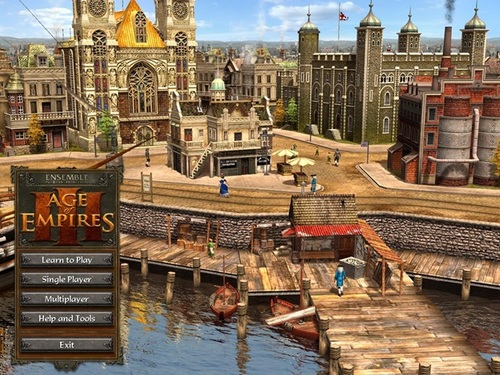 |
| It was a real thrill to unlock “Guy in Funny Wig Wandering around the Docks.” |
It was a great concept, but some strategy purists didn’t take to it. And it wasn’t without its flaws, most notably a lame single player campaign that replaced the history based battles of previous games with a dumb fictional saga that sidestepped the real life drama of colonization.
Age of Empires III was hardly a failure, receiving solid reviews and selling enough to justify two expansion packs. But it lacked the staying power of its predecessor, and its creator, Ensemble Studios, folded after releasing just one more game (Halo Wars, another underappreciated title). It was an abrupt, disappointing end to a franchise that once set the gold standard for strategy games.
4. Super Paper Mario
Super Paper Mario is really only a sequel in name only, to the disappointment of gamers who refused to acknowledge that fact. The first two Paper Mario games were excellent turn based RPGs, while Super Paper Mario dropped the turns for real time action.
Unable to accept that their orange was not an apple, gamers were quick to complain. While it’s understandable to be disappointed that a sequel shifted genres, Super Paper Mario is a treat in its own right, featuring clever gameplay requiring you to switch between 2D and 3D, as well as some truly hilarious writing.
It also features the creepiest boss the Mario franchise has ever seen.
If you think about it, the action RPG is a terrific genre for Mario to explore–you keep the classic Mario gameplay but throw in a bunch of numbers to add a little depth. While it doesn’t quite approach the pristine quality of its paper predecessors, it’s still tons of fun.
Again, Super Paper Mario was hardly a failure, but you’d be hard pressed to find it mentioned alongside other classic Nintendo games. And there’s been no talk of a follow up, which is especially unfortunate considering the true sequel to the Paper Mario games, Sticker Star, was a mediocre disappointment. Let’s hope this oddball in the Nintendo oeuvre gets another look someday.
3. Army of Two: The 40th Day
Not every sequel is a sequel to a good game. Army of Two was a mediocre at best third person shooter, its interesting co-op ideas the only highlight in a game peppered with terrible attempts at comic relief and a story that seemed to glorify mercenary work. When The 40th Day came out two years later, it’s no wonder it didn’t attract much attention–why take the risk on a sequel to something forgettable when there were dozens of other shooters out there?
Which is a shame, because The 40th Day is actually pretty damn good.
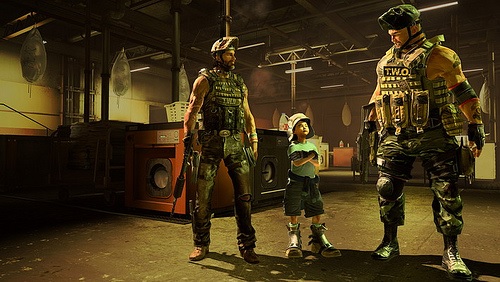 |
| Especially once you team up with the little kid and start solving mysteries on the side. |
Now, The 40th Day doesn’t break any new ground, or tell a compelling tale, or really do anything that you haven’t seen before. It is, however, ridiculously fun. The gaming equivalent of a good summer popcorn movie, The 40th Day is about blowing as much shit up as you can as awesomely as you can.
Gone is the “trying too hard to be serious” plot of the first game, replaced with a story about a fictional terrorist group trying to conquer Shanghai. It’s just you and a buddy (co-op is the only way to play) taking down an army of self-righteous douchebags who have what’s coming to ’em.
The shooting is solid enough, but it’s all the little co-op touches where the game shines. Blast through a checkpoint together, or sneak up on an officer and force a surrender. Make “morality” decisions at certain moments, where whoever picks an option first forces the other player to go along with their decision as you see the results play out in comic book panels–which means you can either berate your friend for shooting an endangered tiger and driving it to extinction, or laugh together as you set the tiger free and it ends up hiding in the back seat of a bad guy’s car.
 |
| Or celebrate the extinction, I guess, if you and your friend are weird. |
This is a game where you can pimp your gun with rainbows or solid gold, where you can play rock-paper-scissors with your buddy and virtually fist bump him anytime you want. It is ridiculous and over the top and stupid, stupid fun.
2. Halo 3: ODST
Like BioShock 2, the reaction to Halo 3: ODST was less “bleh!” and more “eh,” to use the technical terms. Released in-between the massively hyped Halo 3 and the smash hit that was Halo: Reach, it’s not surprising that ODST was less beloved than its fellow space shooters.
That’s not to say nobody liked it–it sold millions of copies and received solid reviews. But it’s rarely mentioned alongside other Halo titles nowadays and, coming out so close to the release of Reach, was only played for a few months before most gamers jumped ship.
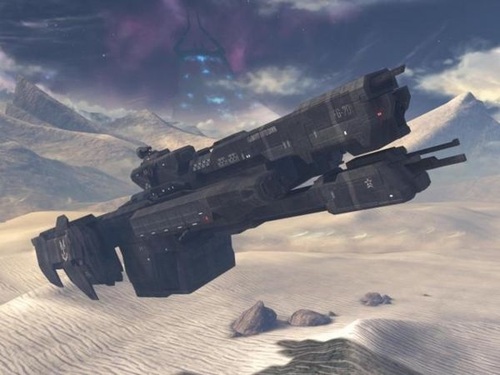 |
| Or more like jumped spaceships, am I right? No, I’m not. I’m so sorry. |
The pseudo-expansion pack ditched the superhuman Master Chief, putting players in charge of regular (albeit inexplicably tough) humans. Its unique story telling style had you controlling a rookie soldier (literally named Rookie, as characterization is not one of Halo’s strongpoints) who’s knocked unconscious at the start of a major urban battle and tries to piece together what happened as he wanders the empty city hours later. By finding pieces of evidence you flashback to another squad member and their fight, and by having the choice of doing these missions in any order ODST offers a nice change of pace from its linear siblings.
Most of the missions are standard Halo fare, but the hub city completely changes the tone. It’s dark and moody–drenched in neon and accompanied by a downbeat jazz soundtrack (easily the best in the franchise), it’s almost as if Halo went film noir.
Throw in a cooperative arena mode, Firefight, that influenced future Halo games while being pretty damn fun its own right, and you’ve got a tidy little package. Any Halo fans that skipped ODST should remember it the next time they’re looking for a fix.
1. Deus Ex: Invisible War
Search for lists of the worst video game sequels and you’ll usually find Invisible War. It’s not surprising, really. Deus Ex is rightly considered one of the greatest games ever made–it took FPS genre conventions and blew them apart, replacing linear corridors with wide-open environments that could be traversed a dozen different ways. And it told a sprawling, engrossing cyberpunk storyline to boot, a story where your decisions mattered. How do you follow up on that?
Now, before you run off to the comments section to call me an idiot, I’m not going to argue that Invisible War is better than Deus Ex. Invisible War has some pretty glaring flaws. But it’s still a good game, which many people don’t realize because they’re too busy unfairly comparing it to the original.
Let’s start with the valid criticisms. Invisible War was dumbed down–you had fewer customization options, fewer RPG elements and fewer ways to approach each level. It’s also much shorter than the original, and when it launched it had technical problems and demanding specs.
 |
| And a really, really stupid cover. |
But a dumbed down Deus Ex is still smarter than most video games–Invisible War is hardly a mindless shooter. Where it really deserves credit though is in the story department–Invisible War stays true to Deus Ex’s cyberpunk setting and narrative structure while giving you even more control over the situation. For all of its freedom of choice, Deus Ex didn’t really let you make any big decisions until the very end of the game, where you up and decide the fate of the world.
Invisible War, meanwhile, gave players a ridiculous amount of freedom, letting you dictate not just large swaths of the plot but also allowing you to approach many different objectives at your leisure. You can shape the world of Invisible War in countless ways, and as you do you’re forced to choose between supporting various morally ambiguous factions (Deus Ex, for all of its narrative strengths, was ultimately just a complicated good versus evil story). The twisting, morally grey storyline is a rightful successor to Deus Ex, and is absolutely worth experiencing. It’s a shame the gameplay isn’t quite up to scratch, but don’t let that discourage you from enjoying what is still a very well made game. If you can stop yourself from constantly comparing Invisible War to the original Deus Ex, you might just find yourself having fun.
